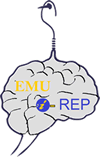JavaScript is disabled for your browser. Some features of this site may not work without it.
| dc.contributor.advisor | Demirel, Hasan | |
| dc.contributor.author | Khan, Ghulam Mustuffa | |
| dc.date.accessioned | 2023-04-24T07:42:35Z | |
| dc.date.available | 2023-04-24T07:42:35Z | |
| dc.date.issued | 2021-08 | |
| dc.date.submitted | 2021 | |
| dc.identifier.citation | Khan, Ghulam Mustuffa. (2021).Gabor Wavelet Based Diabetic Retinopathy Detection Using Deep Learning . Thesis (M.S.), Eastern Mediterranean University, Institute of Graduate Studies and Research, Dept. of Electrical and Electronic Engineering, Famagusta: North Cyprus. | en_US |
| dc.identifier.uri | http://hdl.handle.net/11129/5631 | |
| dc.description | Master of Science in Electrical and Electronic Engineering. Institute of Graduate Studies and Research. Thesis (M.S.) - Eastern Mediterranean University, Faculty of Engineering, Dept. of Electrical and Electronic Engineering, 2021. Supervisor: Prof. Dr. Hasan Demirel | en_US |
| dc.description.abstract | Diabetic Retinopathy (DR) is the disease that causes blindness when it reaches to the proliferative stage. There are four stages in DR namely: NO DR, Mild DR, Severe DR and Proliferative DR. The detection of diabetic retinopathy in the early stages can prevent sight loss in a notable amount of the population worldwide. The earliest signs of diabetic retinopathy are hemorrhages and hard exudates which are red and yellow lesions on the retina of the eye. Diagnosis of the DR is performed using retinal image analysis. Manual Analysis of these images to decide the presence of the DR is somewhat slow and costly. To ease the job of a medical consultant, we can take the images of the retina and feed them to the trained machine learning model and get the results whether the person has diabetic retinopathy or not. In this thesis, we propose a system to detect and classify diabetic retinopathy using the Gabor filter-based CNN with fusion. Proposed model fuses the decisions generated by Gabor-based CNN and traditional CNN pipelines. A preprocessing stage is employed to normalize images before feeding them into the CNN architecture. Preprocessing includes cropping and image resizing. A pre-trained CNN model VGG16, is selected as a deep machine learning architecture throughout the thesis. Decision fusion approaches including Sum Rule and Product Rule are employed throughout the fusion process. The recall, specificity, f1score, precision, and accuracy of the models have been studied and generated results are compared with each other and methods in the literature. The receiver characteristics curve (ROC) and Area under the curve (AUC) metrics are also measured to evaluate the classification performance. Messidor retina image database have been used to measure the performance of the iv proposed system. The results show that the proposed system to detect and classify diabetic retinopathy using the Gabor filter-based CNN with fusion generates higher performance over the state-of-the-art alternative methods in the literature. Keywords: Convolutional Neural Networks, Deep Learning, Machine Learning, Gabor Filters, Data Fusion. | en_US |
| dc.description.abstract | ÖZ:Diyabetik Retinopati (DR), proliferatif aşamaya ulaştığında körlüğe neden olan bir hastalıktır. Diyabetik retinopatinin erken evrelerde saptanması, dünya nüfusunun önemli bir kısmında görme kaybını önleyebilir. Diyabetik retinopatinin en erken belirtileri, gözün retinasında kırmızı ve sarı lezyonlar olan kanamalar ve sert salgılardır. DR'nin teşhisi, retina görüntü analizi kullanılarak gerçekleştirilebilmektedir. DR'nin varlığına karar vermek için bu görüntülerin Manuel Analizi biraz yavaş ve maliyetlidir. Bir tıbbi danışmanın işini kolaylaştırmak için retinanın görüntülerini alıp eğitimli makine öğrenme modeline besleyebilir ve kişide diyabetik retinopati olup olmadığına bakabiliriz. Bu tezde, füzyonlu Gabor filtre tabanlı CNN kullanarak diyabetik retinopatiyi tespit etmek ve sınıflandırmak için bir sistem öneriyoruz. Önerilen model, Gabor tabanlı CNN ve geleneksel CNN kanalları tarafından üretilen kararları birleştirir. Görüntüleri CNN mimarisine beslemeden önce normalleştirmek için bir ön işleme aşaması kullanılmaktadır. Ön işleme süreci, kırpma ve görüntünün yeniden boyutlandırılmasını içerir. Tez kapsamında önceden eğitilmiş bir CNN modeli olan VGG16 derin makine öğrenimi mimarisi olarak seçilmiştir. Birleştirme süreci boyunca toplam kuralı ve çarpım kuralı içeren karar birleştirme yaklaşımları kullanılmaktadır. Modellerin hatırlama, özgüllük, f1skor, kesinlik ve doğrulukları çalışılmış ve elde edilen sonuçlar literatürdeki yöntemler ve birbirleriyle karşılaştırılmıştır. Alıcı özellikleri eğrisi (ROC) ve Eğrinin altındaki alan (AUC) metrikleri de sınıflandırma performansını değerlendirmek için ölçülür. Önerilen sistemin performansını ölçmek için Messidor retina görüntü veri tabanı kullanılmıştır. Sonuçlar, füzyonlu Gabor filtresi tabanlı CNN vi kullanılarak diyabetik retinopatiyi tespit etmek ve sınıflandırmak için önerilen sistemin, literatürdeki son teknoloji alternatif yöntemlere göre daha yüksek performans ürettiğini göstermektedir. Anahtar Kelimeler: Evrişimli Sinir Ağları, Derin Öğrenme, Makine Öğrenimi, Gabor Filtreleri, Veri Füzyonu. | en_US |
| dc.language.iso | eng | en_US |
| dc.publisher | Eastern Mediterranean University - Doğu Akdeniz Üniversitesi | en_US |
| dc.rights | info:eu-repo/semantics/openAccess | en_US |
| dc.subject | Thesis Tez | en_US |
| dc.subject | Artificial intelligence-Human recognition-Computer vision | en_US |
| dc.subject | Intelligent Systems | en_US |
| dc.subject | Human-Robot-Interactions | en_US |
| dc.subject | Robotics - Human factors-Artificial Neural network | en_US |
| dc.subject | Convolutional Neural Networks | en_US |
| dc.subject | Deep Learning | en_US |
| dc.subject | Machine Learning | en_US |
| dc.subject | Gabor Filters | en_US |
| dc.subject | Data Fusion | en_US |
| dc.subject | Electrical and Electronic Engineering | en_US |
| dc.title | Gabor Wavelet Based Diabetic Retinopathy Detection Using Deep Learning | en_US |
| dc.type | masterThesis | en_US |
| dc.contributor.department | Eastern Mediterranean University, Faculty of Engineering, Dept. of Electrical and Electronic Engineering | en_US |









